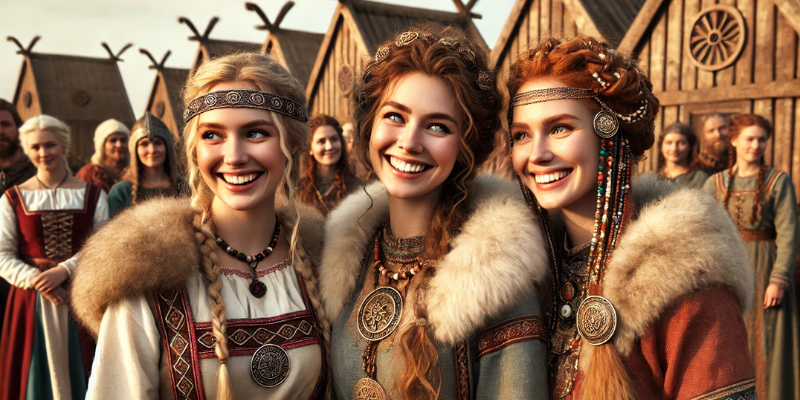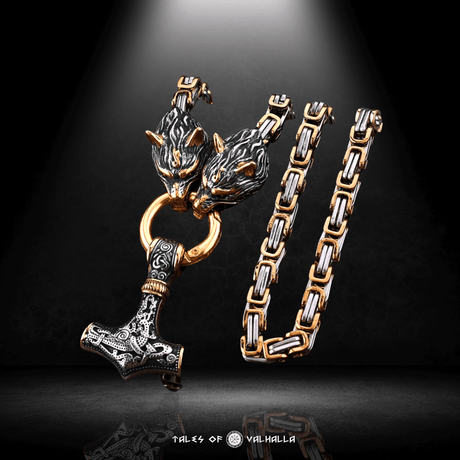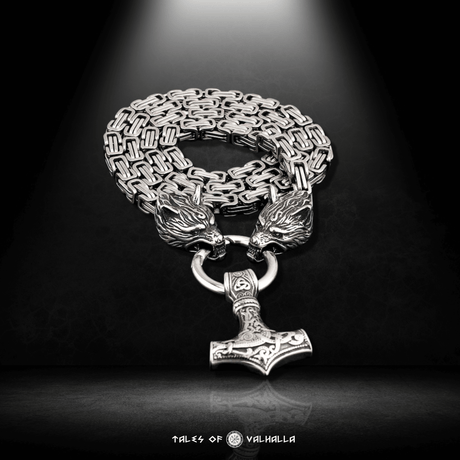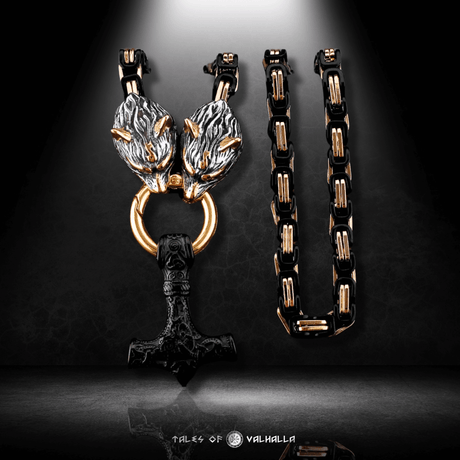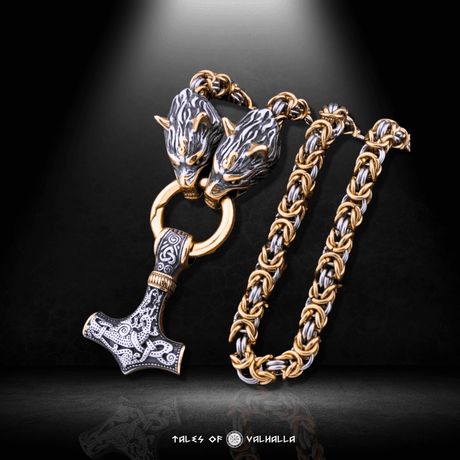The Viking Age, which spanned from approximately 793 to 1066 AD, has long captured the imagination of historians, reenactors, and fans of Norse culture. When we think of Vikings, images of fierce warriors in battle come to mind, but what about the women? Viking women played an essential role in Norse society, and their clothing reflected both their functionality and status. Woman Viking clothing is more than just historical attire—it's a symbol of strength, resilience, and the rich cultural tapestry of Viking life.
This blog will explore the authentic clothing worn by Viking women, how it evolved with practicality and status in mind, and why it remains a source of inspiration for modern viking costume women and enthusiasts today. Whether you're looking to better understand authentic Viking women for a cosplay event, historical reenactment, or simply out of curiosity, this guide will walk you through the essential elements of woman Viking clothing with historical accuracy and insight.
Woman Viking Clothing: A Blend of Practicality and Elegance
Viking women were the backbone of Norse society. While Viking men were off raiding or trading, women managed the household, oversaw the farm, and raised the next generation of warriors. Therefore, woman Viking clothing needed to be practical enough to handle daily tasks, yet elegant enough to reflect a woman's social status and the craftsmanship of the period.
Unlike the highly romanticized depictions often seen in pop culture, the authentic Viking woman dressed in layers of wool and linen garments designed to keep them warm in the harsh Scandinavian climate. These garments were often adorned with intricate brooches, beads, and accessories, which symbolized their family ties, wealth, and rank within the community.
The Essential Elements of Woman Viking Clothing
The Viking Underdress (Smokkr)
The foundation of any woman Viking clothing ensemble was the smokkr, or underdress. This long, ankle-length gown was typically made from linen for warmth in cold weather and comfort in the summer. The smokkr provided a base layer that would be paired with other garments for both warmth and protection from the elements.
The underdress was usually long-sleeved, designed to cover a woman’s entire body except for her hands and neck. Viking women used the smokkr as a canvas, layering over it with aprons, cloaks, and accessories to express their personal style and social standing. The simplicity of the smokkr made it a versatile and essential part of historically accurate Viking clothing.
Fabrics and Materials
Authentic Viking women's clothing was made primarily from natural fibers like wool and linen. Wool was prized for its warmth and durability, while linen provided breathability during the warmer months. Viking women would often dye their clothing using natural substances like plants and minerals, resulting in earthy tones such as brown, green, and blue. Wealthier women, who had access to imported dyes, might wear more vivid colors, including red or purple.
The materials and colors of a woman's clothing would often signify her social status. Viking women of higher status would wear finer fabrics, while those of lower status would wear garments made from coarser wool and linen. This distinction in materials ensured that clothing not only served practical purposes but also reflected social hierarchy within Viking society.
- See more: Viking Clothing Materials and Fabrics
The Viking Apron Dress (Hangarok)
Over the underdress, Viking women would wear the hangarok, or apron dress. This sleeveless garment was typically made from wool and fastened at the shoulders with large brooches, often referred to as "tortoise brooches" due to their shape. These brooches were a defining feature of authentic Viking woman attire, and their size and decoration often indicated the wearer's wealth and status.
The apron dress was typically shorter than the underdress, falling somewhere between the knee and mid-calf. Viking women would often accessorize the apron dress with beads, chains, and pendants, which were suspended between the brooches. These accessories were not only decorative but also carried cultural and personal significance.
Symbolism in Viking Women's Jewelry
Viking women's clothing was never complete without accessories. The brooches used to fasten the apron dress were often adorned with intricate designs, reflecting both artistic craftsmanship and symbolic meanings. Wealthy women might have silver or bronze brooches, while poorer women would use simpler materials like iron or copper.
In addition to the brooches, Viking women wore strings of beads, often made from glass, amber, or jet. These beads could signify trade connections, as some were imported from as far away as the Mediterranean. Beads were more than just ornaments; they were a way for Viking women to display their family's wealth and status. A woman who wore many beads was considered affluent and well-connected.
Practical Accessories in Woman Viking Clothing
Cloaks and Shawls: Essential for Warmth
Given the cold climate of Scandinavia, cloaks and shawls were essential parts of woman Viking clothing. These outer garments were made from thick wool and fastened at the neck or shoulders with a brooch. Cloaks were long, often reaching down to the ankles, and were worn over the underdress and apron dress to provide warmth and protection from the wind and rain.
Viking shawls, on the other hand, were shorter and draped over the shoulders. They provided additional warmth without restricting a woman's movement, making them practical for daily tasks like cooking, weaving, or tending the livestock. Cloaks and shawls were usually left undyed in natural wool colors, though wealthier Viking women might have more ornate versions with embroidery or contrasting fabrics.

Cloaks and Shawls
Viking Footwear: Simple but Durable
Shoes worn by Viking women were simple yet sturdy, made from leather and often laced around the ankles. These shoes needed to withstand the harsh terrain and constant wear. While footwear was typically practical, some wealthier Viking women might have shoes with decorated leather or metal buckles, reflecting their status.
Hairstyles and Head Coverings: Completing the Viking Woman Look
The Viking Woman’s Hair
In addition to their clothing, Viking women placed great importance on their hair. Hairstyles were a key part of a woman’s appearance, and how a woman styled her hair could indicate her social standing and marital status. Married Viking women often wore their hair in elaborate braids or buns, covered by a linen cap or woolen scarf to symbolize their status as married women. Unmarried women, by contrast, wore their hair loose or in simpler braids.
Haircare was taken seriously in Viking society, and many archaeological finds show that Viking women owned combs, often made of bone or antler, and other grooming tools. Hair length and grooming were seen as symbols of femininity and status.

The Viking Woman’s Hair
Head Coverings: Symbolism and Function
Married Viking women typically wore head coverings as a symbol of their status. These coverings varied from simple linen scarves to more elaborate woolen caps, often adorned with beads or embroidery. Head coverings were worn not only for symbolic reasons but also to keep warm and protect the hair from the elements. Wealthier women might have decorated headpieces, while simpler headscarves were worn by women of lower status.
- See more: Hair Accessories
Viking Women’s Clothing in Modern Culture
Viking Costume Women: Reenactments and Cosplay
The legacy of woman Viking clothing lives on today through historical reenactments, festivals, and cosplay events. Viking costume women often look to create historically accurate representations of Viking women’s attire, combining authenticity with a flair for modern design.
Cosplayers often blend the elements of female Viking cosplay with the rich tradition of Norse mythology. From the apron dresses fastened with tortoise brooches to the flowing cloaks and intricately braided hair, female Viking costumes offer a powerful, visual representation of strength and femininity. These costumes reflect both the historical accuracy of Viking attire and the creative freedom of modern-day cosplay.
- Buy now: Woman Viking costumes
Female Viking Cosplay: Modern Interpretations
Cosplayers who embody Viking women at festivals and events often take creative liberties, blending elements of historical accuracy with dramatic, fantasy-inspired designs. For example, female Viking costumes often include armor elements like bracers or shields, reflecting the popular notion of Viking women as shieldmaidens—although evidence of female warriors in Viking society is debated among historians.
For those looking to create an authentic Viking woman look, attention to detail is key. Start with a simple linen or wool underdress, layer an apron dress on top, and complete the look with tortoise brooches, beads, and a cloak or shawl. Braiding your hair or adding a headscarf will lend an authentic touch, perfect for cosplay events or reenactments.
Historically Accurate Viking Clothing: How to Achieve It
Creating a historically accurate Viking clothing look requires an understanding of the materials and accessories used during the Viking Age. For an authentic look, prioritize natural materials like wool and linen, avoid synthetic fabrics, and stick to earthy, natural colors. Avoid exaggerated armor elements, as Viking women typically did not wear armor unless they were from wealthy or powerful families.
For those interested in recreating Viking outfits for women, choosing the right accessories is just as important as the garments themselves. Use large brooches, glass beads, and linen head coverings to capture the look of an authentic Viking woman. These elements help to convey the practicality, status, and beauty of Viking women’s attire.
What Did Viking Women Look Like?
The Appearance of Viking Women in Society
While historical evidence on what Viking women looked like is limited, various archaeological findings and written accounts provide insight into their appearance. Viking women likely had fair or light-colored hair, as genetic studies suggest that many Scandinavians had blonde or reddish hair. Their clothing, which was designed for practicality and warmth, emphasized their connection to the land and the importance of community in Norse society.
We also know from written accounts that Viking women were well-groomed and took pride in their appearance. Combs, grooming tools, and jewelry found in Viking graves suggest that these women valued cleanliness and presentation. Even in their everyday attire, Viking women balanced practicality with beauty, using natural materials and ornate accessories to express themselves.
The Legacy of Woman Viking Clothing Today
Woman Viking clothing continues to captivate modern audiences, whether through historical reenactments, cosplay, or simply a fascination with Norse culture. From the layered underdresses and apron dresses to the practical yet beautiful accessories, Viking women’s attire reflects the strength, resilience, and craftsmanship of an ancient society.
For those looking to create an authentic viking outfit female, it’s essential to focus on natural materials, traditional styles, and the cultural significance of the accessories. Whether you’re preparing for a cosplay event or interested in historically accurate Viking clothing, woman Viking clothing offers a rich, inspiring look at the past.
As we continue to explore Viking history and bring their legacy to life, the clothing worn by Viking women reminds us of their integral role in one of history’s most iconic warrior cultures.
Conclusion
The clothing worn by Viking women was more than just protection from the elements—it was a reflection of their roles in society, their heritage, and their craftsmanship. From the practical yet elegant underdresses to the ornate apron dresses and accessories, Viking women’s clothing provides a window into the lives of these strong, resilient women.
Today, the legacy of Viking women’s clothing continues to inspire, whether through reenactments, cosplay, or modern interpretations of Norse fashion. At Tales of Valhalla, we embrace this tradition by offering Viking-inspired apparel that honors the history and significance of these remarkable women and their contributions to Viking society.

